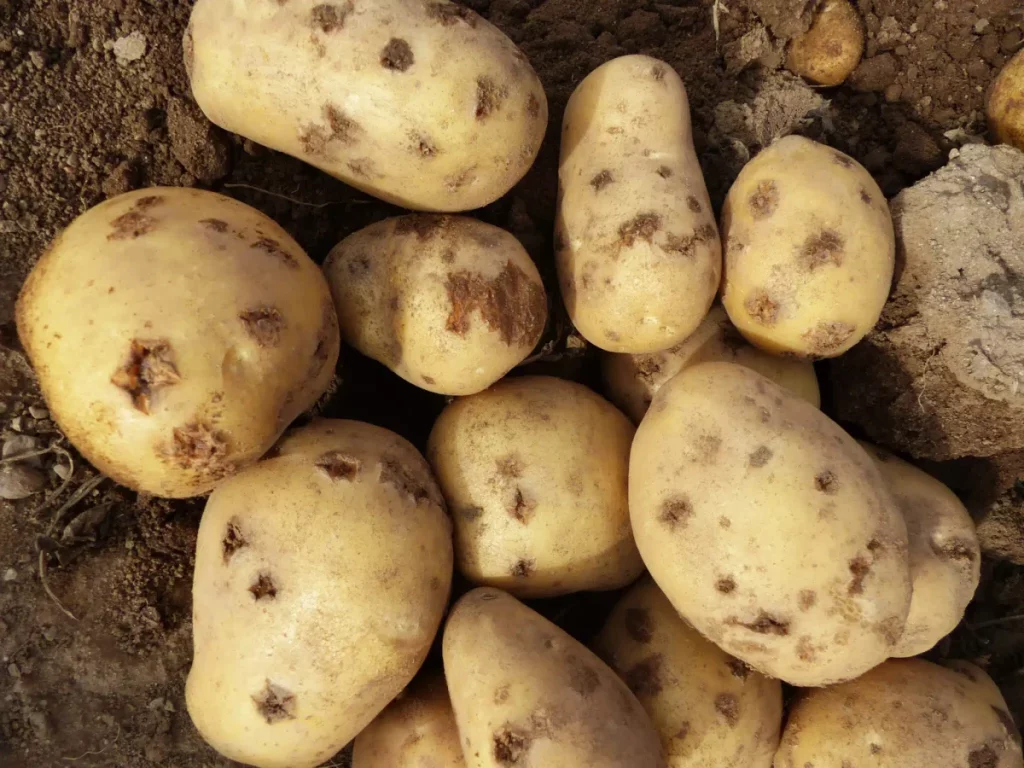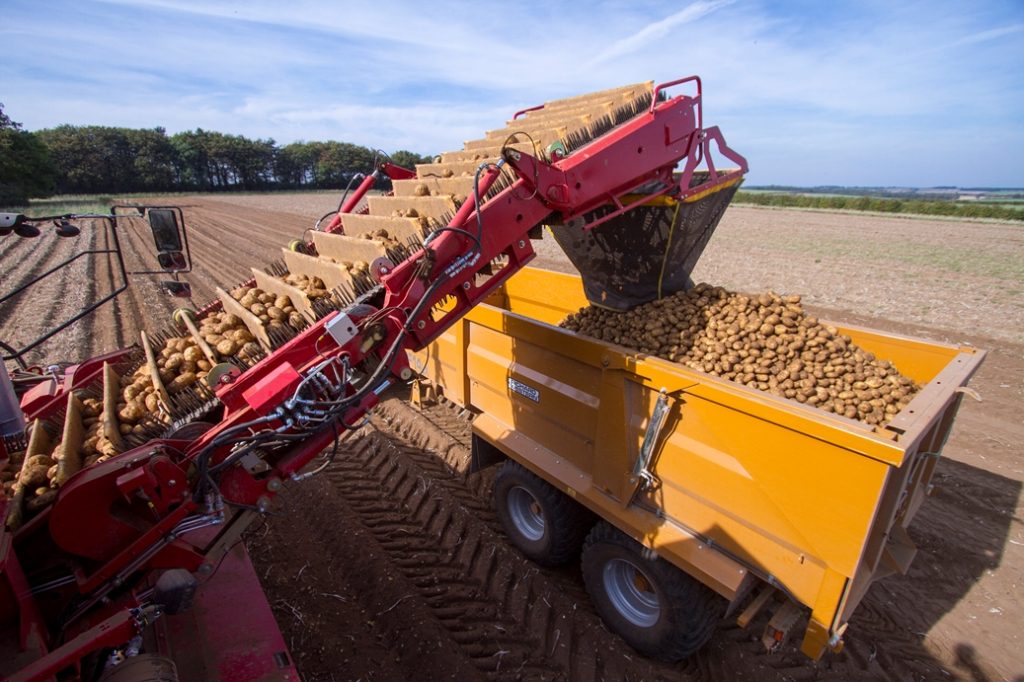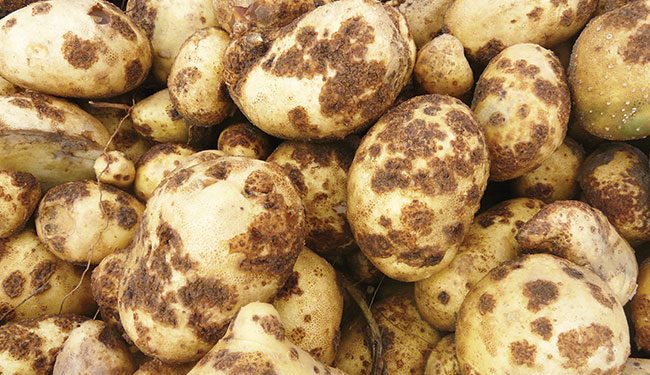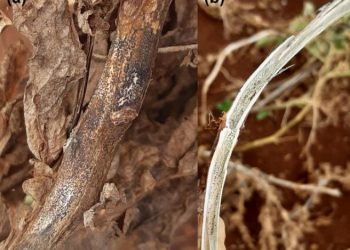Common scab is one of the oldest bacterial diseases of potatoes. It has been known for more than 100 years and still limits potato production worldwide because of the lack of consistent control. Scab doesn’t affect yields, but the corky lesions on the skin, both superficial and pitted, will reduce the quality and marketability of the crop.

Common scab is caused by Streptomyces bacteria in the soil. Most species of Streptomyces are non-pathogenic but there are a few that have pathogens. Streptomyces scabies (syn. Streptomyces scabiei) is a pathogenic species that has been investigated more extensively than other common scab species. It’s a Gram-positive, filamentous bacterium that produces both mycelium and spores. It can survive indefinitely in the soil as a saprophyte or on other hosts such as beets, turnips, carrots, parsnips, radishes and rutabagas. The optimum soil pH range for Streptomyces is 5.5 to 7.5.
S. scabies penetrates young tubers through lenticels, stomates or bruises. The small tubers that form at tuber initiation are the most susceptible stage. Lesions expand as the potatoes mature, and mature potatoes have a thicker skin than small tubers and are resistant to infection. Keeping the soil moisture at or near field capacity for four to five weeks beginning when tubers are forming reduces the incidence of common scab. The only reliable control method of common scab is the use of resistant varieties. Unfortunately, the number of resistant varieties is limited.
Why control of common scab has been unachievable for so many years? The factors that are responsible for this problem are:
- The rapid development of new pathogenic Streptomyces spp creates genetic diversity. Pathogenic S. scabies produce a toxin, Thaxtomin A, that inhibits the production of cellulose in the infected tissues of growing potatoes. This lack of cellulose results in lesions. The gene responsible for the synthesis of Thaxtomin A is found on a pathogenic island, a bit of DNA that also carries the genes necessary for infection and virulence. Pathogenic islands can be transferred by conjugation from S. scabies to non-pathogenic Streptomyces spp. This explains the continuous appearance of new pathogenic species. Genetic diversity makes it very difficult to breed varieties that are resistant to common scab.
The relationship between incidence and severity of common scab and soil chemical composition is complex and specific for each soil. Differences in soil texture, soil structure, pH, organic matter, microbial flora, moisture, affect the incidence and severity of common scab. For this reason, the management practices that work to reduce common scab in one field does not work in other fields.
Any soil treatment must be mixed with two million kilograms of soil per hectare. It’s difficult to control diseases by amending the soil. The plow layer, usually considered to be to a depth of 15 cm, means treating two million kgs of soil per hectare. It’s not a simple task to mix any product uniformly into that much soil.
Using healthy seed is no guarantee that the daughter tubers will be healthy. Even seed tubers that appear to be healthy may carry spores of S. scabies in lenticels. This explains how scab can be introduced into a field that was free of scab.

Variety trials conducted in fields with heavy common scab infestation provide invaluable information for growers. Susceptible new varieties with traits requested by buyers, should be grown only in healthy fields. Robert Coffin mentioned to me that there have been reports of heavy scab infestation of potatoes produced in fields that never had potatoes before. Therefore, if rented land has an unknown level of common scab infestation, the infestation can be determined by laboratory analysis of soil. A&L Biologicals in Ontario does this for growers.
Many breeding programs in North America have made resistance to common scab a priority in their breeding work. With time, this may help achieve acceptable control of this disease.







